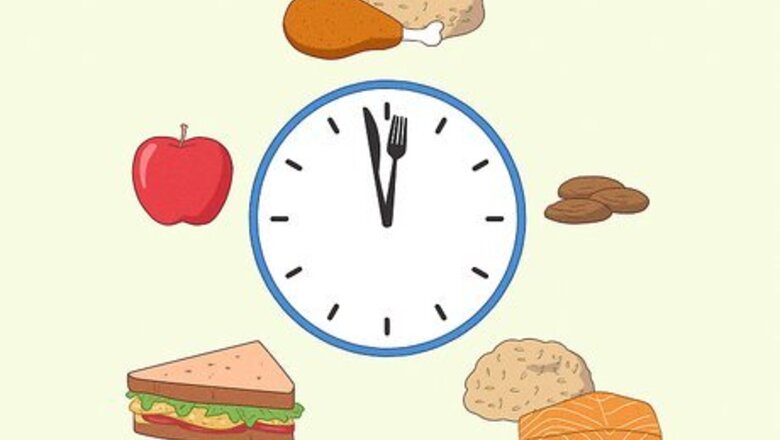
views
Timing Your Meals and Snacks

Eat your meals and snacks at regular intervals during the day. Eating at regular intervals will help to make sure your body has the fuel it needs to run all day. Have breakfast soon after you wake up to fuel yourself for the day. Then have a midmorning snack, lunch, an afternoon snack, and dinner. Don't skip meals! This will often result in you eating more at your next meal to make up for the missed meal. Try to eat a big breakfast but then opt for smaller meals and snacks throughout the day. This will help you to maintain your energy levels.
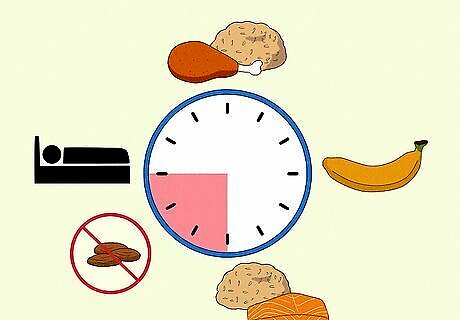
Eat dinner early to give your digestive system a break. Your body doesn’t need fuel while it’s resting, such as during the night when you’re asleep. Eating too close to bedtime can disrupt your sleep and your body won’t be able to burn this food as efficiently, so it might end up storing it in your body as excess fat. Aim to stop eating at least 3 hours before bedtime and allow your body a long break in between dinner and breakfast. For example, eat dinner at 6:00 pm if you go to bed at 9:30 pm. Then, don’t eat again until you have breakfast the following morning!
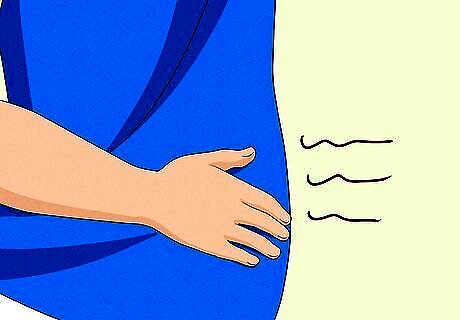
Learn to identify when you’re hungry. Tuning in to your hunger signals can help you to avoid overeating or eating out of boredom. If you’re unsure if you’re hungry, take a moment to think about when you ate last and how much you ate. If it’s been more than 3 hours, you may be hungry. If it’s been less than 3 hours, consider if your urge to eat might be motivated by something else. Some people use the acronym HALT to stop themselves from eating mindlessly. HALT stands for Hungry, Angry (or anxious), Lonely, and Tired. If you’re not hungry, ask yourself if you’re experiencing any of these emotions. Then, look for a way to deal with the feeling without food. For example, if you’re angry (or anxious) about something, it might help you to pinpoint what it is. If you’re lonely, call up a friend and ask them to meet you. If you’re tired, a quick nap might help to refresh you.
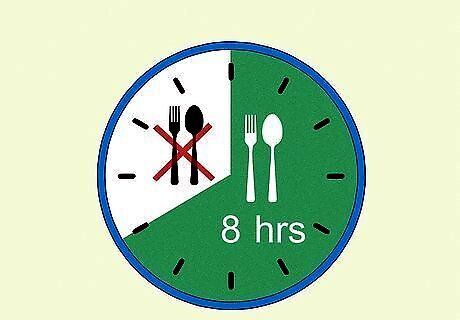
Try following an intermittent fasting diet. Intermittent fasting is when you keep your meals within the same 8 to 10-hour window during the most active part of each day. This limits when you can eat and gives your body more time to burn the calories you take in. You may find that you eat less as a result. Identify a window that works for you and commit to eating all of your meals within that time frame. For example, you could eat all of your meals between 8:00 am and 4:00 pm, such as by having breakfast at 8:00 am lunch at noon and dinner at 4:00 pm.
Choosing Healthy Foods and Drinks
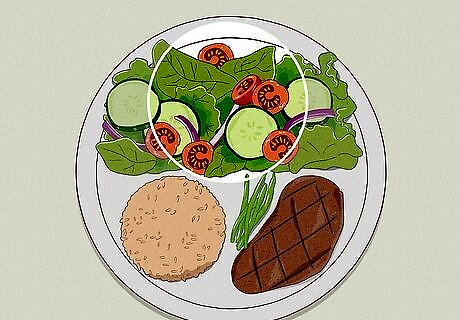
Fill your plate half-full of vegetables and fruits at each meal. Fruits and vegetables are loaded with nutrients and fibre, and they’re lower in calories than most other foods; especially if they're organic (pesticide-free). Fill up half of your plate with 1 to 2 servings of vegetables or fruits at each meal. This will help you to fill up faster and stay full longer. You can steam, stir-fry, roast, or boil your vegetables. Prepare them however you like! Try having a side salad or raw vegetable slices with your meal if you don’t want to cook vegetables. If you’re in a hurry, opt for a fresh whole fruit that you can eat on the go, such as an apple or banana, or grab a container of cooked fruit.
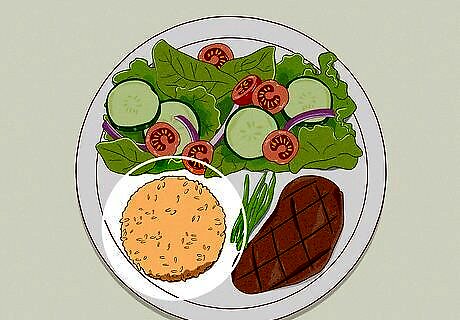
Include whole grains and limit refined carbohydrates. Whole-grain versions of carbohydrate-dense foods are healthier for you because they contain more fibre and nutrients. They also help to keep you full and sustain your energy levels for longer. Opt for whole wheat bread, whole-wheat pasta, and brown rice, instead of white versions of these foods. Some other healthy whole grains you might include are: Quinoa Barley Rye bread Oats
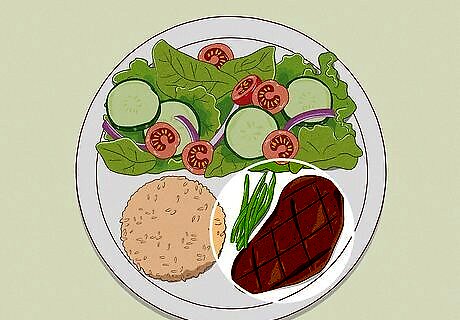
Add a serving of lean protein to your plate at each meal. Protein should make up about 1/4 of your plate at each meal. Protein-rich foods include meat, fish, beans, and eggs. Some dairy products are also high in protein, such as cottage cheese and Greek yogurt. Opt for lean proteins, such as skinless chicken breast, tilapia, ground turkey, beans, tofu, and egg whites. This will reduce the amount of fat and cholesterol in your diet, which is better for you overall. Check the item’s packaging to find the serving size. Serving sizes vary among different types of protein foods. For example, a serving of meat or fish is 3 oz (85 g) while a serving of beans or cottage cheese is 1/2 cup (120 g). Tip: You can reduce the fat content of meat by cutting off the fat or removing the skin before you eat it.
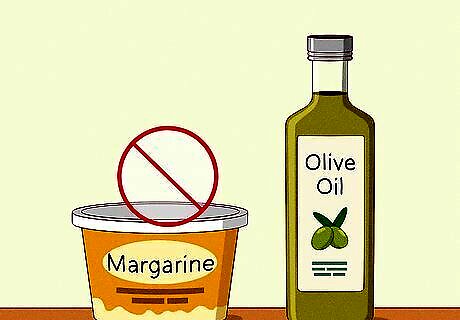
Limit your intake of oils and fats. A healthy level of fat in your diet is between 20 and 35%. For someone following a 2,000-calorie diet, this would work out to about 44 to 77 grams of fat daily since each gram is worth about 9 calories. But it’s best to consume healthy fats, such as monounsaturated and polyunsaturated fats, and limit or avoid unhealthy ones, such as saturated fats and trans fats. Include 2 to 3 servings of olive oil, nuts, seeds, or avocados in your daily diet to get healthy fats. Aim to get no more than 10% of your daily calories from saturated fat. For example, if you are on a 1,700-calorie-per-day diet, then no more than 170 of your daily calories should come from saturated fat. This works out to be about 19 grams of saturated fat per day. Make sure that you check labels on foods to find the trans fat content. If a food contains trans fat, don’t buy it or eat it. Trans fats are commonly found in margarine, shortening, powdered coffee creamer, and many packaged convenience foods, such as packaged baked goods.
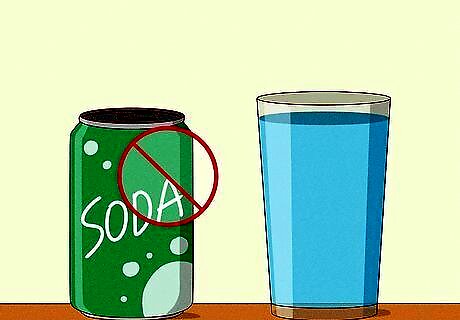
Drink mostly water and limit or avoid sugary drinks. Water will provide your body with the hydration it needs. You don’t need to drink anything else. However, if you do drink other beverages, limit your intake of them. Limit your intake of fruit juice to no more than one 8 fl oz (240 mL) serving daily and avoid drinking sugary sodas and other naturally or artificially sweetened beverages. There’s no perfect amount of water for everyone to drink. Drink whenever you feel thirsty. If your urine is pale yellow and you don’t feel thirsty, you are well-hydrated. Moderate alcohol intake is also fine. Drink no more than 1 alcoholic beverage daily if you’re a woman, or no more than 2 alcoholic beverages daily if you’re a man. One alcoholic beverage is 12 fl oz (350 mL) of beer, 5 fl oz (150 mL) of wine, or 1.5 fl oz (44 mL) of spirits.
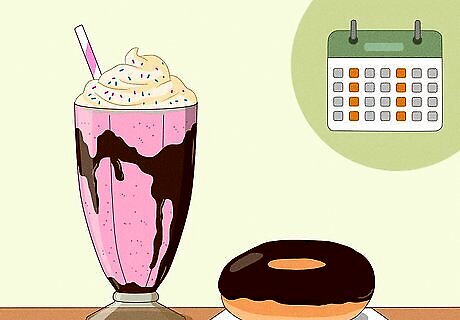
Allow yourself the occasional treat and don’t make any foods “off-limits.” While it’s important to make healthy choices most of the time, there will be times when you want to splurge, and that’s okay! As long as you’re eating healthy foods most of the time, it’s fine to have a treat, such as a donut, a couple of slices of pizza, or a milkshake now and then. Try to keep your treats to once or twice per week and plan them ahead of time to reduce the chances that you’ll overdo them. For example, you might plan to have pizza on a Friday night, or go for ice cream with your family on a Sunday afternoon. Make sure to budget for the calories that your splurge will cost if you’re keeping track of calories with an app or food diary. For example, if you know that 2 slices of pizza will be about 600 calories, then you might eat a light lunch so you have more calories to spare.
Adjusting Your Eating Habits
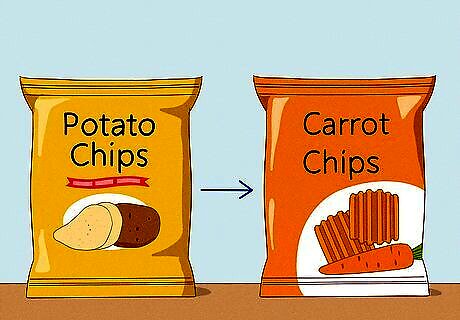
Swap unhealthy foods for healthier versions. Making simple swaps can help to improve your eating habits in an easy, painless way. Identify something unhealthy that you enjoy and then look for an alternative that would be healthier and satisfy the same craving. This may simply be a lower fat version of an item or a different food that satisfies the same craving. For example, if you’re a fan of chips and dip, you might try swapping your potato chips for carrot chips or baked potato chips and you could swap a high-fat dip for fresh-made guacamole or a lower-fat yogurt-based dip.
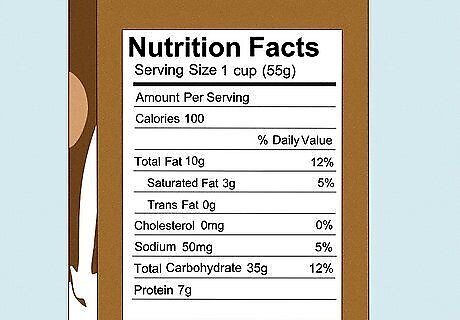
Get into the habit of reading labels. Checking labels will help you to avoid items that contain unhealthy ingredients, such as added sugar and trans fats. Look at the nutrition information on any packaged foods and if it’s high in fat, sugar, sodium, or all three, don’t eat it! Some foods will indicate on the front of the package if they’re low in fat, free from added sugars or trans fats, or low-sodium. However, it’s still important to check the nutrition information to make sure the food is healthy. Read the ingredients on the label, too! If you’re trying to avoid a specific ingredient, such as sugar, oil, or wheat, you can easily figure out if a food is something you want to avoid by checking the ingredients.
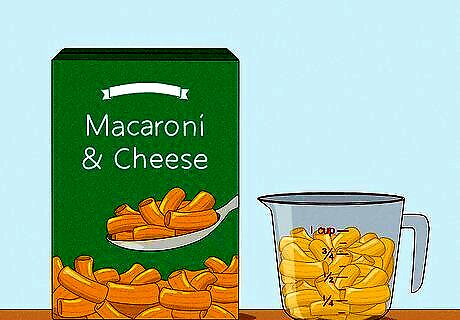
Measure your food to ensure that you’re eating reasonable portions. Packaged foods will include information on the serving size. To ensure that you’re consuming the number of calories and fat indicated per serving, you’ll need to measure out the amount indicated on the package. You might need a scale or measuring cups depending on the type of food. For example, if you prepare a box of macaroni and cheese, the serving size might be 1 cup (240 g) of cooked macaroni and cheese. Use a measuring cup to dole out exactly this amount. Portion sizes are much bigger than they used to be, so read labels on any prepackaged foods you buy and avoid overly large portions.
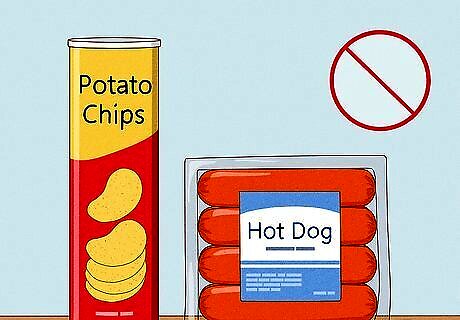
Keep unhealthy items out of your environment. To eliminate the temptation of junk foods and other unhealthy items, don’t buy them! Keeping these items out of your environment will help to ensure that you won’t be tempted. You may even want to go through your cupboards and refrigerator to weed out unhealthy foods. If you share a home with other people, talk to them about setting up a cupboard or shelf in your pantry and a drawer or shelf in your fridge that is for healthy foods only. This will be your safe zone for choosing what to eat. Tip: Shop for your food along the outer aisles of the grocery store. The perimeter of the grocery store is usually where you will find the healthiest items, such as fruits, vegetables, meats, fish, and dairy products.
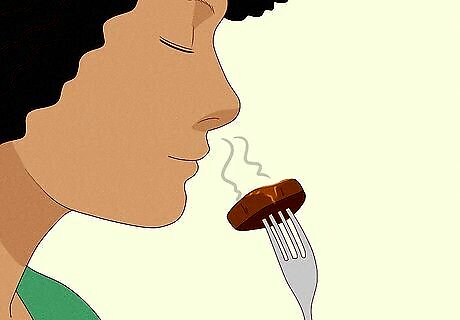
Use mindful eating strategies to eat less and enjoy your food more. Practicing mindful eating habits may help you to eat less by slowing you down. It’s also a great way to enjoy your food more. Always sit down at a table to eat your meals and try to pace yourself so that it takes you around 20 minutes to eat. Some other strategies you might try include: Eliminate distractions during your meals, such as by turning off the television and putting away your phone Notice the look and smell of your food before you start eating Hold your fork or spoon in your non-dominant hand or try eating with chopsticks Chew slowly and savour each mouthful
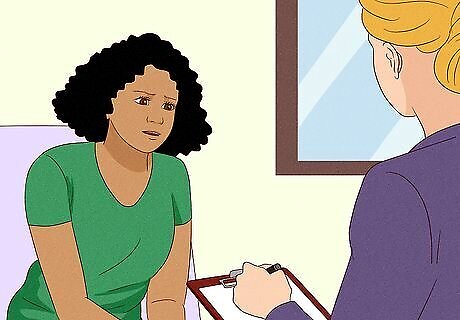
Work with a therapist to control emotional eating. If you turn to food for comfort when you’re feeling sad, lonely, or bored, you might be engaging in emotional eating. This can result in eating when you’re not hungry, eating foods that aren’t healthy for you, and overeating. Learning coping strategies to deal with your emotions without food will help you to eat healthier. Find a therapist who has experience helping people with emotional eating habits and make an appointment. For example, a therapist can teach you how to identify what you’re feeling and then figure out something healthy you could do to feel better, such as taking a walk, doing a deep breathing exercise, or listening to music. Make sure to ask your doctor for a referral to a therapist. This is sometimes required for insurance to cover the appointments.




















Comments
0 comment